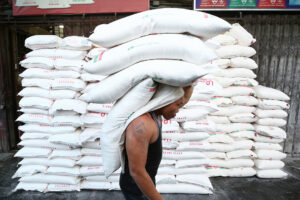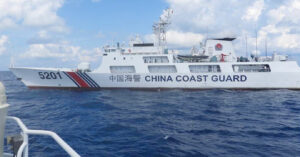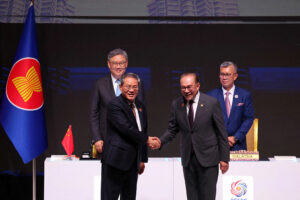By Kenneth Christiane L. Basilio, Reporter
The Philippines on Tuesday kicked off its annual military drills aimed at testing the country’s territorial defense strategies and its armed forces’ ability to repel potential invasions amid an increasingly coercive China in the contested South China Sea.
About 2,000 Filipino troops will take part in nine days of high-intensity military exercises along the country’s western seaboard, near disputed maritime features that have been at the heart of Manila’s security concerns.
Called Exercise Dagitpa — a blend of the Filipino words for sea, air and land — the Philippine military will conduct beach defense drills, naval fire support operations and missile interception exercises to test its joint force capabilities against invasion threats, according to an Armed Forces of the Philippines handout.
While not directed at any specific country, the drills are designed to hone the military’s ability to resist an invading force for up to a month, a period during which the Philippines expects treaty allies to step in, its military chief General Romeo S. Brawner, Jr. said.
“We have to rely on ourselves first,” he told reporters in Filipino after the exercise’s opening ceremonies at the Philippine military headquarters in Manila. “If conflict breaks out, we’ll be the first to engage in combat.”
“We are expecting also reinforcements or assistance from our allies…. but we need to weather the initial attack first,” he added.
The Southeast Asian nation has stepped up military activities both independently and with allies as tensions continue to escalate with China in the South China Sea, a resource-rich waterway that has been the site of repeated confrontations between Philippine and Chinese forces.
China has maintained sweeping control over the waters bordering several Southeast Asian nations despite a 2016 ruling by a United Nations-backed court that voided its overreaching claim.
Manila has described China’s actions in the waterway as coercive and escalatory, while China insists its operations are meant to defend its sovereignty.
“Considering the threats we are facing, we are comparing our capabilities with those of our neighboring countries,” Mr. Brawner said, noting that Philippine forces still lack military equipment. “We have the ability to defend our country, but what I’m saying is it’s still not enough.”
“Our current equipment is not enough to cover it entirely,” he added.
The Philippines has launched a $34-billion (P2 trillion) military modernization program aimed at bolstering its defense capabilities over the next decade, including the acquisition of advanced warships, jets and missile systems, as it pushes back against Beijing’s military might in the South China Sea.


















